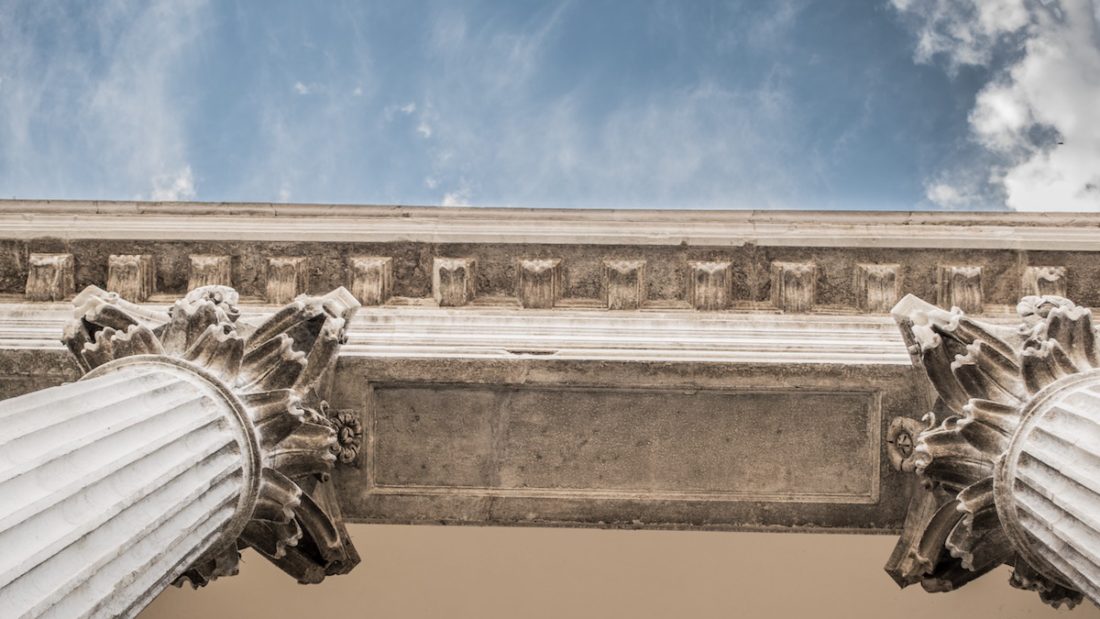Let me tell you about an archaeological find — one of many that cements the gospel accounts of Jesus Christ firmly in history.
In 1941, the Hebrew University professor was excavating the tombs of the Kidron Valley that runs along the eastern edge of the temple mount. He discovered a tomb that had been blocked by a large closing stone. When he entered the tomb, he found eleven ossuary boxes containing bones. The professor documented his findings, and the artefacts were stored away.
For some reason, the findings of the professor were not made public until 1962. When they were, it caused a sensation. On the side of one ossuary box facing the wall was inscribed “Simon Ale,” the name “Simon” and the first three letters of “Alexander”. Realizing he didn’t have enough room to carve “Alexander”, the engraver started again on the second line, carving “Alexander”. Then, on the third line, he inscribed “(son) of Simon.”
The lid of the box was inscribed “of Alexander” in Greek… and below it, the Hebrew word (slightly miss-spelt) for “Cyrenian.”
Archeologist conclude that it is “highly probable” that these bones were those of the son of the man forced to carry the crossbeam of Jesus’ cross. Mark writes: A certain man from Cyrene, Simon, the father of Alexander and Rufus, was passing by on his way in from the country, and they forced him to carry the cross. (Mk 15:21).
Doesn’t that blow your mind!
Here’s another story:
Liberal theologians who cast doubt on a lot of biblical historicity have claimed that the gospel of John contains fictitious accounts written to embellish the Jesus story. They used to cite the account of Jesus healing the lame man at the pool of Bethesda as one such example (Jn 5:1-9), as there was no archaeological evidence of such a pool with five porticoes existing.
And then… yes, you’ve guessed it… in 1964, archaeologists working in the grounds of St Anne’s church, just north of the temple mount, confirmed the existence of an extensive pool complex that comprised the pools of Bethesda.
John’s gospel describes the pool in some detail. He speaks of the existence of five covered porticoes. These have all been found. One of the reasons excavations took so long was that so many buildings had been built over the top of the pools during the ages, including a pagan temple and a large Byzantine church.
Excavations showed the existence of two main pools separated by a dam wall. The depth of the pools is surprising. It is thought that these pools were used to water animals being taken through the sheep gate to the temple to be sacrificed.
So, there we have it: Just when some thought it safe to dismiss the gospel accounts as historic fiction, they turn out to be true.
Christianity has a long history of being attacked by atheists. You may have done it yourself.
It’s extraordinary, isn’t it, that despite the confident predictions of Christianity’s demise by Roman emperors and atheist philosophers, Christianity is still around. So maybe, it is not quite so fictional as you thought.
Here’s something else to make you think. Historians once attacked the historical credibility of Jesus’ being buried in the tomb of Joseph of Arimathea. They said that no person defiled by crucifixion would ever be allowed to be put into a family tomb.
Then, in 1968, building contractors working in northeast Jerusalem uncovered a family grave. Inside it was an ossuary, (a stone box containing the bones of someone who had died). The ossuary had a Hebrew inscription on it saying that the bones were those of Jehohanan the son of Hagkol. Jehohanan had been crucified some time in the first century and his lower leg had been fractured—just like those of the two rebels crucified either side of Jesus. The end of the nail that had pierced Jehohanan’s heel had bent, making it difficult to withdraw, so they’d left it imbedded in the bones that were inside the box.
So it seemed that crucified people were allowed to be placed into a family grave after all.
Archaeological evidence shows that the gospel accounts of Jesus’ life have historical integrity.
I therefore invite you to check them out… and discover the plans God has for you; plans made possible by Jesus coming to us 2000 years ago.


